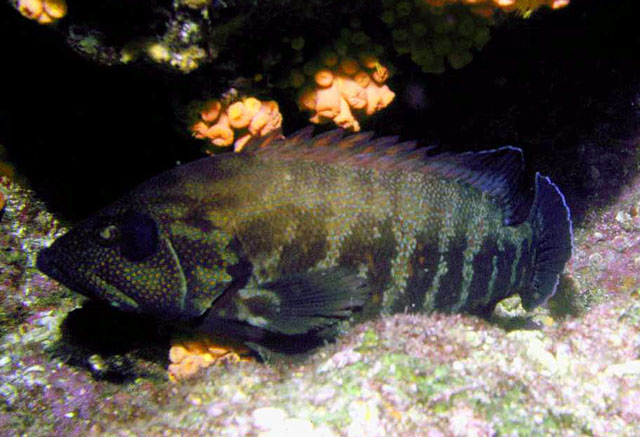| Epinephelidae (Groupers) |
| 39 cm TL (male/unsexed) |
|
reef-associated; marine; depth range - 80 m, non-migratory |
| Eastern Pacific: Gulf of California to Ecuador and the Galapagos Islands. |
|
Dorsal spines (total): 9-9; Dorsal soft rays (total): 14-15; Anal spines: 3-3; Anal soft rays: 8-8. Distinguished by the following characteristics: body depth 2.7-2.9 in SL; head length 2.3-2.5 in SL; rounded preopercle, finely serrate; posterior and anterior nostril subequal; third dorsal spine, longest, membranes incised between anterior spines; pectoral fins longer than pelvic fins, pectoral fin length 1.5-1.7 in head length; caudal fin rounded; lateral body scales strongly ctenoid; lateral line scales 48-49; lateral scale series 80-83 (Ref. 089707) |
| Found in coral reefs; also along rocky shores (Ref. 5222). A shy and secretive species (Ref. 5222). Feeds on fishes and crustaceans; reaches at least 25 years; recently confirmed as a protogynous hermaphrodite, spawning peaks in July and August in the Gulf of California (Ref. 089707). |
|
Least Concern (LC); Date assessed: 09 December 2016 Ref. (130435)
|
| harmless |
Source and more info: www.fishbase.org. For personal, classroom, and other internal use only. Not for publication.
